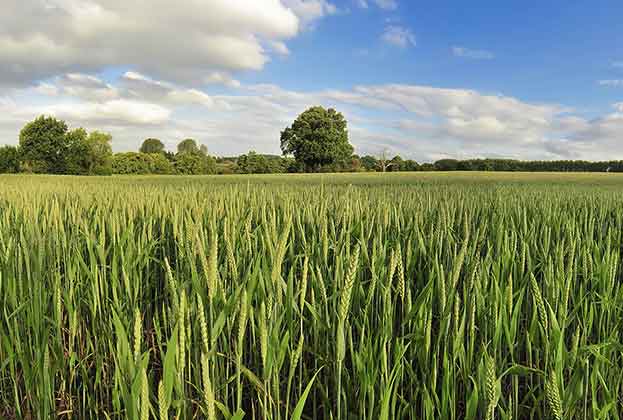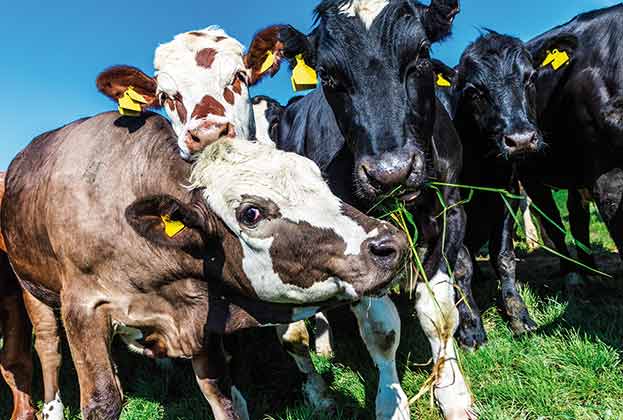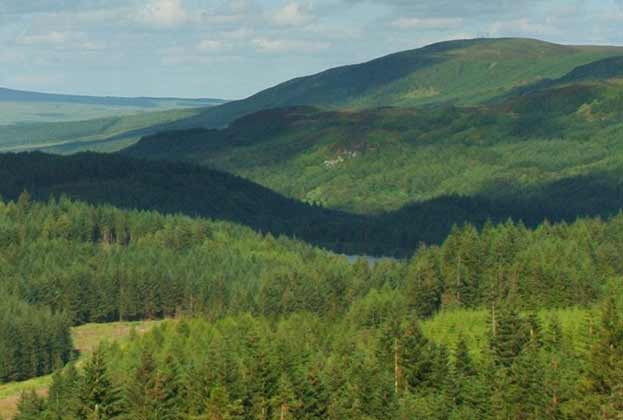Increasing policy action and public concern puts the pressure on rural emissions

Multiple interrelated factors are driving the current increase in climate action. The landmark Paris Agreement (2015) is an international concord which aims to keep global temperature rise this century to below 2°C above pre-industrial levels and to pursue efforts to limit the increase even further to 1.5°C. To this date, 189 parties have ratified the agreement.
At a national level, the UK became the first country to commit to a legally binding net zero emissions target. England and Northern Ireland are committed to achieving net zero emissions by 2050, Scotland by 2045 and in Wales the goal is a 95% reduction in emissions by 2050. These targets are legislated within the UK Climate Change Act, which sets the nation’s annual carbon budgets.
Since the Climate Change Act was passed in 2008, the UK has demonstrated that it is possible to decouple emissions growth and economic growth (although the impacts of coronavirus lockdown have challenged this convention). Since 2008, GHG emissions have fallen by 30%, while the economy has grown by 13%. Per capita emissions in the UK are now close to the global average at 7–8 tonnes of carbon dioxide equivalent (tCO2e) per person, having been over 50% above in 2008. Even though UK emissions have decreased through measures targeting the low hanging fruit in industry and energy, agriculture has been left behind in its strategy to reach net zero.
Within the UK there has been a host of strategies developed to support decarbonisation. The Green Finance Strategy will require all financial companies and large asset owners to disclose their climate-related financial risk in their annual reporting from 2022. The strategy will enhance carbon disclosure, but also require an understanding of climate impact on their existing business models and supply chains. Food supply chains and agricultural businesses within them will undoubtedly fall under the scrutiny of this high-level legislation, as well as being required to supply carbon disclosure for larger businesses further along the chain looking to comply with their own net zero targets.
While the UK’s new overarching net zero target could result in a more joined up, cross-sector approach between Defra and BEIS, climate policy and agriculture are both devolved matters, creating scope for piecemeal policy making at a time when coordinated action is critical.
Recent climatic events – floods, wildfires, storms – and their growing frequency have ignited public concern, leading to global protests, school strikes and demonstrations
Savills Rural Research
In the UK agricultural emissions have only decreased by 16% since 1990 making agriculture an increasingly large part of the problem. In 1990, agriculture was a mere 7% of total emissions. As of 2018, it makes up 11% of the total and little is being done to limit the increase. Given that the UK is on course to miss its fourth and fifth carbon budgets, it is highly likely that new legislation will appear in the next few years to enable the UK to reach its 2050 net zero target, and this could coincide with the agricultural transition period.
Recent climatic events – floods, wildfires, storms – and their growing frequency have ignited public concern, leading to global protests, school strikes and demonstrations. This has not abated through Covid-19 lockdown. Young influencers, such as student climate activist Greta Thunberg, continue to serve as a catalyst for change. Businesses have started to react but there is an urgent need to catch up, and UK agriculture will undoubtedly be impacted by future climate legislation.
However, the threat to agriculture is more than simple regulation. In order to retain public support, the agricultural sector will have to step up to the climate change challenge.
Read the articles within Spotlight: Rural Land and Carbon below.
.jpg)


